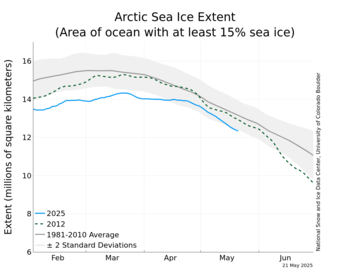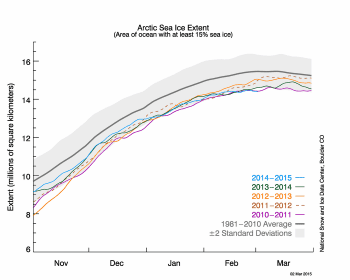Old Rocks
Diamond Member
- Thread starter
- #21
What is interesting about that curve is the appearance that the breakover point has moved back by over two weeks. Should we see that going the other direction this September, we could be looking at a whole new paradigm in the Arctic.
http://arctic.atmos.uiuc.edu/cryosphere/IMAGES/seaice.area.arctic.png
Looking at that data, it appears that the ice delta does not move in a nice linear fashion, but in incremental jumps.
http://arctic.atmos.uiuc.edu/cryosphere/IMAGES/seaice.area.arctic.png
Looking at that data, it appears that the ice delta does not move in a nice linear fashion, but in incremental jumps.


